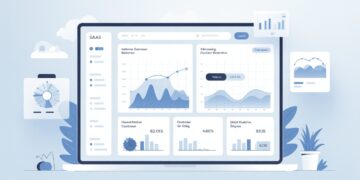In today’s digital world, having a strong personal brand is essential for career growth, business success, and industry influence. Whether you’re a professional, entrepreneur, freelancer, or content creator, your personal brand defines how others perceive you and can open new opportunities across various platforms. This article will guide you through the key steps to building a powerful, consistent personal brand across multiple digital channels.
Understanding Personal Branding
Personal branding is the process of creating and managing the public perception of your professional identity. It involves showcasing your skills, values, expertise, and personality in a way that differentiates you from others. A well-developed personal brand can:
- Establish authority in your industry
- Increase your visibility to potential employers, clients, and collaborators
- Help build trust and credibility with your audience
- Create opportunities for networking, partnerships, and business growth
Defining Your Unique Value Proposition (UVP)
Your unique value proposition is what sets you apart from others in your field. Identifying and defining your UVP ensures that your brand remains clear, compelling, and focused. To discover your UVP:
- Assess Your Strengths: What skills, experiences, and expertise make you unique?
- Identify Your Passion: What topics or industries excite you the most?
- Understand Your Audience: Who are you trying to reach, and what problems do you solve for them?
- Craft Your Brand Statement: Create a concise and impactful message that summarizes who you are and what you offer.
Choosing the Right Platforms
Each digital platform serves a different purpose and audience. To maximize your reach and effectiveness, focus on the platforms that align with your brand goals:
- LinkedIn – Best for professional networking, thought leadership, and career opportunities.
- Twitter (X) – Ideal for industry updates, engagement with influencers, and quick insights.
- Instagram – Effective for visual storytelling, personal branding, and audience engagement.
- YouTube – Great for long-form content, tutorials, and building credibility through video.
- Medium & Blogging Platforms – Perfect for in-depth articles, insights, and thought leadership.
- Personal Website – Acts as your digital portfolio and central hub for your brand.
Crafting a Consistent Brand Voice and Visual Identity
To build a recognizable and memorable brand, consistency across all platforms is crucial. Your brand voice and visual identity should reflect your personality, industry, and audience expectations.
Brand Voice:
- Determine if your tone will be professional, casual, inspirational, educational, or a mix.
- Maintain a consistent writing style in all your content, whether on LinkedIn, Twitter, or blogs.
- Use storytelling to make your brand more relatable and engaging.
Visual Identity:
- Choose a color scheme, fonts, and imagery that align with your personal brand.
- Use the same profile picture, logo, or signature style across all platforms.
- Create branded templates for social media posts, presentations, and promotional materials.
Content Strategy for Each Platform
Creating content tailored to each platform ensures that your message resonates with the right audience. Here’s how you can optimize content for different channels:
- LinkedIn: Share professional insights, thought leadership articles, and industry news.
- Twitter: Post short-form updates, engage in conversations, and share quick insights.
- Instagram: Use high-quality images, reels, and stories to connect visually with your audience.
- YouTube: Create informative or educational videos, tutorials, and personal branding content.
- Medium/Blogging Platforms: Publish long-form articles that establish you as an expert in your niche.
- Personal Website: Showcase your portfolio, testimonials, and achievements in one place.
Engagement and Community Building
Building a personal brand goes beyond just posting content—it involves engaging with your audience and fostering a strong community.
Ways to Increase Engagement:
- Respond to comments and messages to build relationships.
- Participate in industry discussions and forums.
- Collaborate with other professionals and influencers in your niche.
- Host live sessions, Q&As, or webinars to connect with your audience in real time.
- Share and comment on relevant content from other thought leaders.
SEO and Visibility Optimization
To make your personal brand discoverable, leverage SEO strategies to improve your online visibility:
- Use relevant keywords in your LinkedIn profile, blog posts, and social media bios.
- Optimize your website with proper metadata, alt text, and search-friendly content.
- Include backlinks to your website or social media profiles on guest blogs and collaborations.
- Use hashtags strategically on LinkedIn, Instagram, and Twitter to increase reach.
- Maintain an active presence by consistently updating your profiles with fresh content.
Leveraging Analytics & Adjusting Strategy
To ensure your branding efforts are effective, track performance metrics and adjust your strategy accordingly.
Key Metrics to Monitor:
- Engagement Rates: Likes, shares, comments, and interactions on posts.
- Website Traffic: Page views, bounce rates, and audience demographics.
- Follower Growth: Increase in followers and connections across platforms.
- Content Performance: Which posts generate the most engagement and why?
- Search Rankings: How well your website or profile ranks for industry keywords.
Use tools like Google Analytics, LinkedIn Analytics, and social media insights to measure performance and refine your branding strategy.
Common Mistakes to Avoid
While building a personal brand, avoid these common pitfalls:
- Inconsistency: Mixed messaging or irregular posting can confuse your audience.
- Lack of Authenticity: Trying to be someone you’re not can make your brand feel inauthentic.
- Ignoring Engagement: One-sided communication won’t help you grow your network.
- Spreading Too Thin: Focus on a few key platforms instead of trying to be everywhere.
- Not Showcasing Your Expertise: Failing to highlight achievements and skills can limit your brand’s impact.
Conclusion
Creating a strong personal brand across multiple platforms takes time, consistency, and strategic planning. By defining your unique value proposition, choosing the right platforms, maintaining a consistent brand voice and visual identity, and engaging with your audience, you can establish yourself as a recognized authority in your field. Optimize your brand for search visibility, track performance, and continuously refine your strategy to ensure long-term success. Start building your personal brand today and unlock new career and business opportunities!









